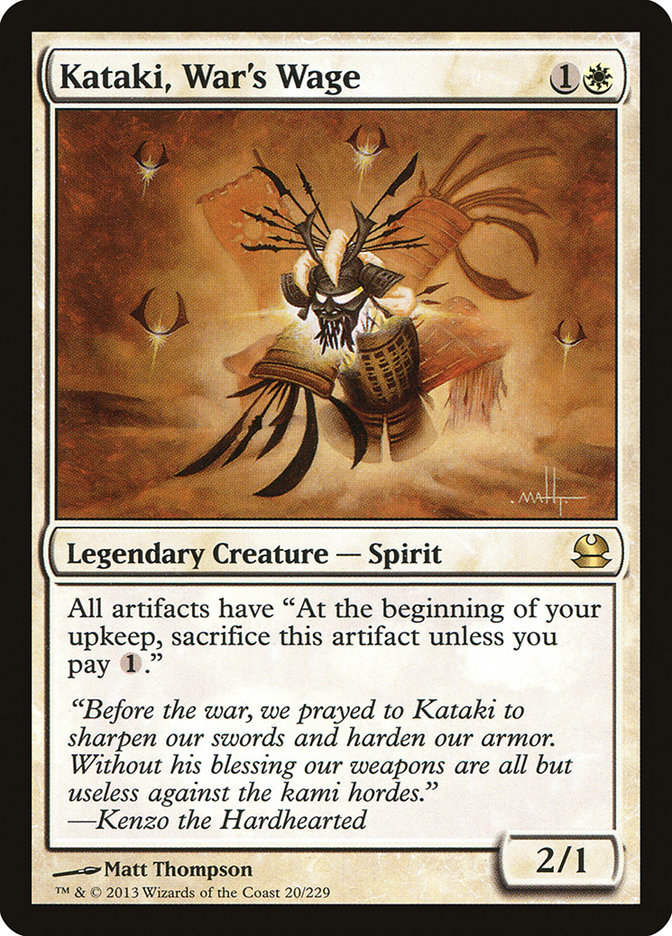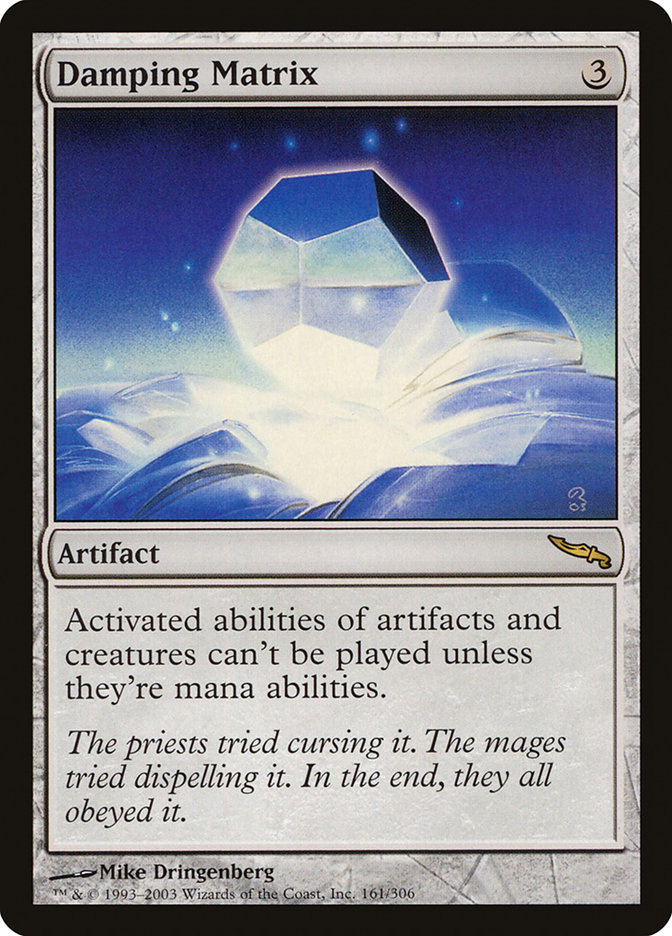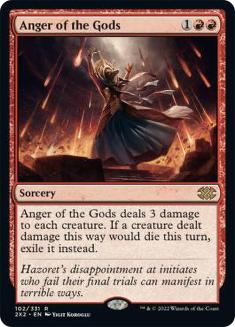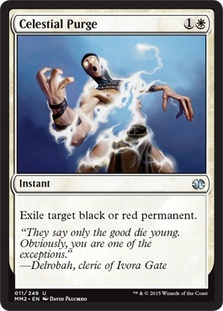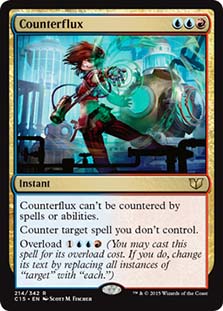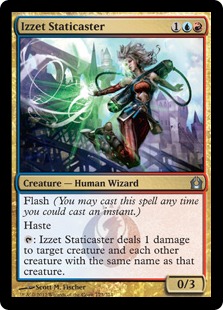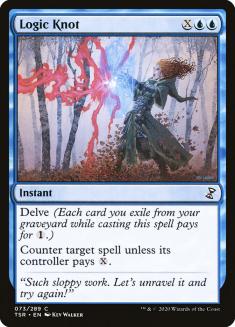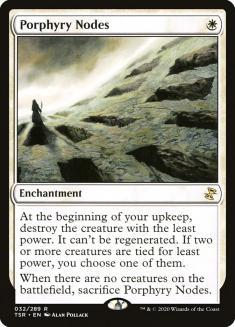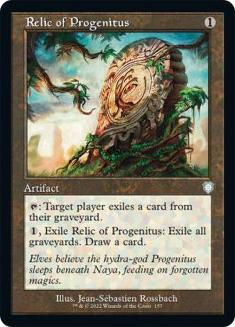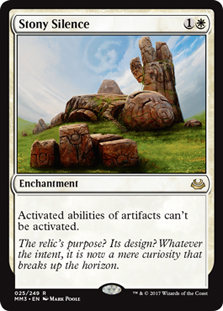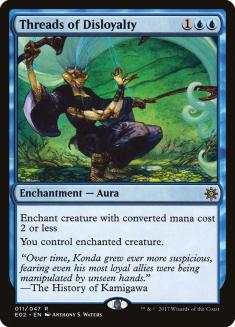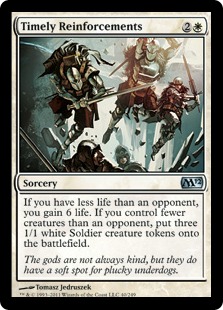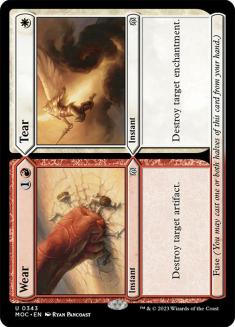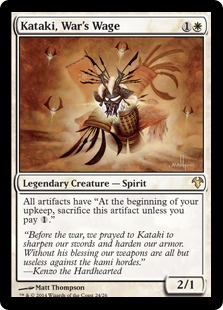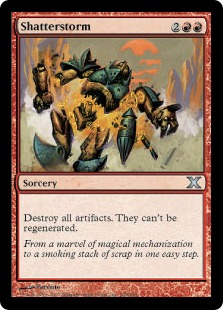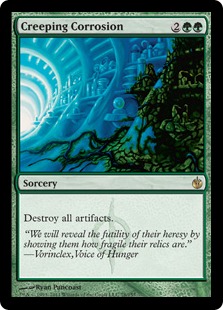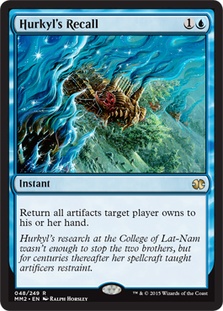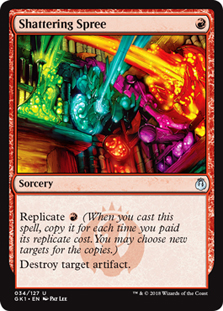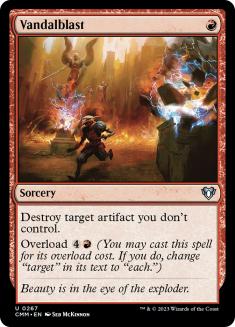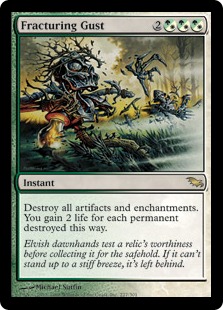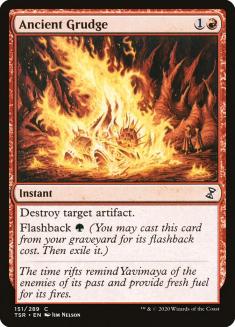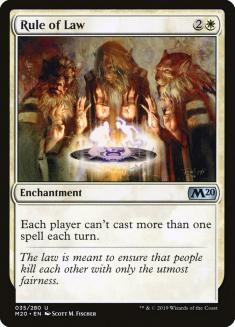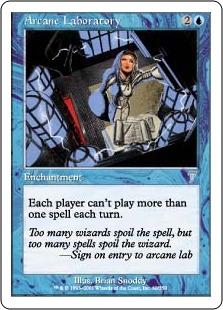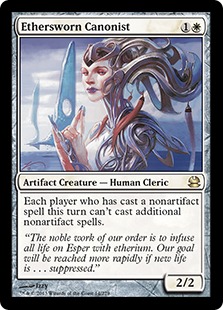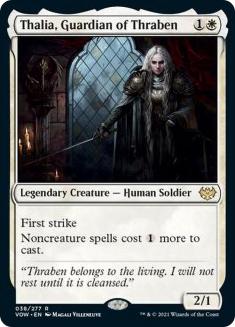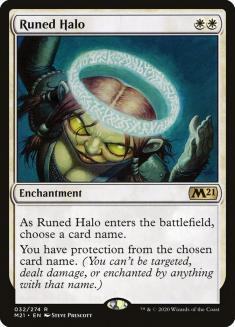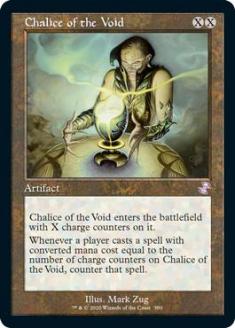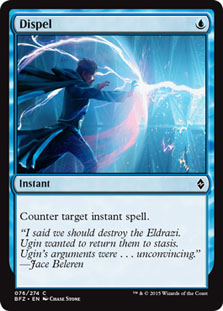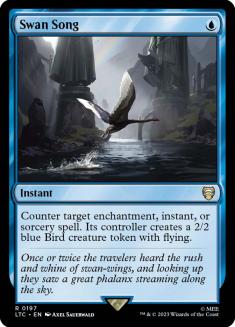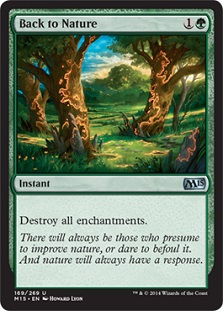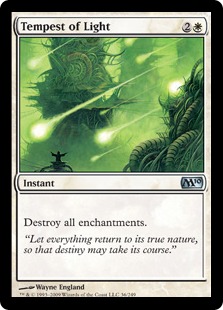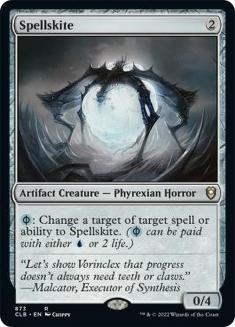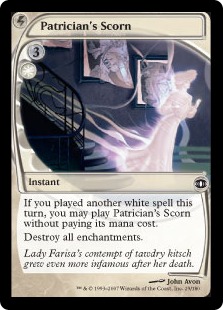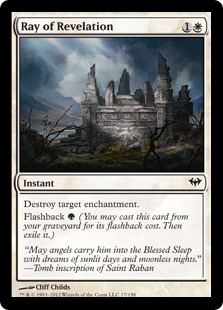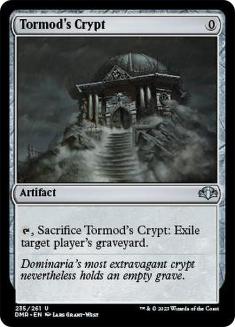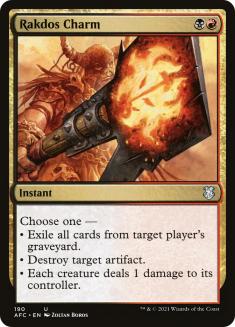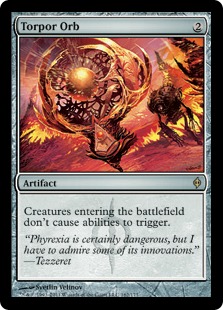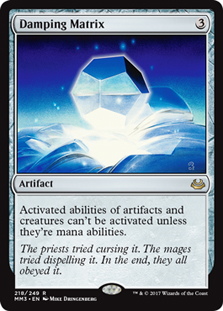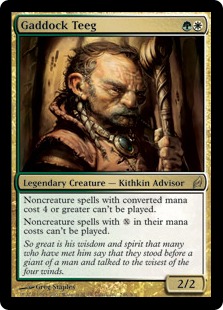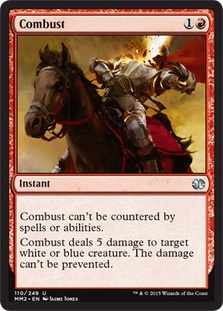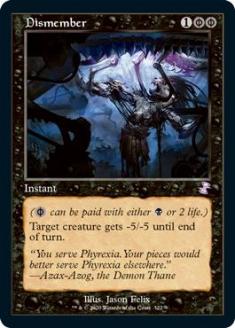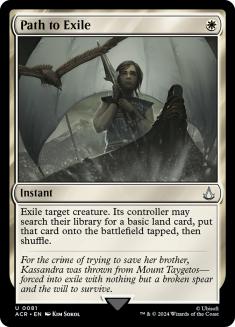Two days left.
As of this writing, there are more than three thousand people preregistered for Grand Prix Richmond, and you’ve all got two days left.
Have you picked out your deck yet?
Of course you have—there’s no way you’ve waited until the eleventh hour to pick out your deck for the biggest Modern tournament of all time, right? Right after a Pro Tour in the same format to give you tons of ideas?
Of course not.
So you’ve got your deck nailed down and ready to go, but the tweaks don’t stop til Saturday morning when you hand in your decklist. On the trip to Richmond, you will debate with your friends:
"Will the Auras deck really be as popular as it was at the Pro Tour?"
"Storm really took Valencia by surprise. Now that people know about it, will it get hated out?"
"Are Splinter Twin decks really going to try to kill me with Tarmogoyf?"
"Is Jund dead?"
"What the hell does Lightning Storm do?"
"Is that 8 Rack deck really a deck?"
And as you answer these questions, you will begin to form the final fifteen for your sideboard.
Unfair Decks = Unfair Sideboard Cards
One of the defining characteristics of bigger formats is the distinction between the "fair" decks and the "unfair" decks. If you’ve only really played Standard, you have a very good idea of what a fair deck looks like. It’s gonna have creatures, removal spells, and other methods of interaction and look to play an interactive game of Magic where it eventually comes out on top. It may be really fast like Zoo or slow and controlling like U/W/R Control, but the goal is to play fairly standard Magic.
However, not all decks in Modern are interested in playing fair.
Whether it’s killing you with an infinite number of Deceiver Exarch; playing twenty spells in one turn; putting six Mountain and a Valakut, the Molten Pinnacle in play; or making a huge and unstoppable lifelinker on turn 3, these decks look to break the rules of Magic.
Lucky for us, these decks are often very vulnerable to specific sideboard cards. While no one card is really going to beat Zoo or Jund for you, a Storm deck actually can’t win the game if an Ethersworn Canonist is in play, a Scapeshift deck can’t actually win the game if a Blood Moon is in play, and a Splinter Twin deck is going to have a very difficult time beating you with a Torpor Orb in play. However, while many of these specific sideboard options can be absolutely backbreaking, they also come with two very major issues.
Too Many Targets
The beauty and the difficulty of formats like Modern is how amazingly wide open they are— if you separate the different flavors of Zoo and Splinter Twin, no deck at the Pro Tour was more than 10% of the field! This type of diversity is extremely refreshing, but it can make building a sideboard very difficult.
Say we decide that we really don’t like losing to Affinity. Maybe there’s that one guy at your local store that always beats you with it or you really think that it will be a popular deck because it’s fairly inexpensive to build. Or maybe your parents were murdered by robots and you feel the best way to avenge their deaths is living out your vengeance through a children’s card game.
For whatever reason, we want to beat Affinity. So we pack the full set of Kataki, War’s Wage in our sideboard. Four of those bad boys are ready to help rebuild your shattered childhood.
When the time comes, however, you play nine rounds on the first day, and there’s nary a robot in sight. Remember what we said before? Not one deck was over 10% of the field at Pro Tour Born of the Gods. This means that it’s very possible for you to not play against Affinity at all in the first nine rounds of the event, meaning those four sideboard slots have completely and totally gone to waste. The robots have once again brought you pain and anguish!
Perhaps if we had played a Kataki or two and then a card that is still good against Affinity but also has applications in other matchups, such as Ancient Grudge or Nature’s Claim, we would have made it to day 2.
Diminishing Returns
The other major issue with this sort of all-in sideboard planning is that many times these "silver bullet" sort of cards have vastly diminishing returns. While difficult, it is possible for your Affinity opponent to beat your Kataki, War’s Wage. What will make this much easier is if you have two more copies stuck in your hand and no other action.
This is often true of many of these backbreaking hosers. By nature their effects are so static and powerful that a second copy will actually have no effect on the game at all. Combo decks are of course prepared for these sideboard cards, and what will happen when they have some sort of way around them?
What happens when you are stuck with three copies of Torpor Orb and your opponent just starts attacking you with Pestermite? Or when your Affinity opponent gets a few +1/+1 counters on an Inkmoth Nexus and starts flying over your Kataki, War’s Wage?
The sad answer is that you will sometimes lose the games in which you draw a bunch of your sideboard cards, which is very far from what we intended when putting all these sideboard cards in there in the first place!
The End Result
So oftentimes when you see decklists in Modern (and Legacy), you end up looking at sideboards like Shaun McLaren’s at Pro Tour Born of the Gods:
While at first glance you might think to yourself "did this guy just grab a random stack of cards or something?" the reality is that he applied the principles I just spoke about. Instead of bringing in four copies of Kataki, War’s Wage against Affinity, he probably brought in something like:
This gives him a solid package against Affinity, but he can also bring in that Anger of the Gods against Zoo, that Izzet Staticaster against Birthing Pod, and that Wear // Tear against Splinter Twin. This sort of sideboard hedging is extremely important, and it is pivotal to figure out the right mix of sideboard cards for your most important matchups.
In order to put together this winning mix, we need to think about a few things:
- What are our good matchups?
- What are our bad matchups in which we need sideboard help?
- How many cards can we afford to commit to each of these matchups?
- Which cards will work well with our strategy?
This last point is very important. If you are playing Five-Color Zoo, boarding in Blood Moon against Scapeshift is probably not a good idea. Many of these powerful sideboard hosers are not one sided, and you need to be aware of how they are going to affect you as well as your opponent.
The Right Stuff
So let’s look at our options against the major unfair decks of the format and see if we can pick the best selections for our deck. We will be looking at the powerhouse sideboard cards that can completely dismantle an archetype and some of the less powerful but more versatile options as well.
Creatures (26)
- 4 Arcbound Ravager
- 4 Ornithopter
- 1 Master of Etherium
- 3 Steel Overseer
- 3 Memnite
- 3 Etched Champion
- 4 Signal Pest
- 4 Vault Skirge
Lands (16)
Spells (18)

Let’s start with the parent-killing robots. Of all the decks in the format, Affinity probably has the highest amount of devastating hate cards that can be thrown its way. Every color but black has at least one backbreaking spell to cast, and there are a ton of more fair options as well.
Many of these cards fall into the one-sided Planar Cleansing camp, and the fact that the deck can still be viable with all of these cards in the format is a testament to its power. It’s important to note exactly what you want to be doing with these sideboard cards as well. While Hurkyl’s Recall is a powerful effect, they will likely be able to replay their board in about two turns—this is not a card for a slower control deck since it doesn’t actually answer any of their threats, but it is a good choice for a combo deck or a deck that is going to win the game quickly.
These are the more versatile options available, and while they don’t provide the backbreaking power of the previous group, they all do a good job of answering Affinity’s threats. Wear // Tear and Nature’s Claim can also put in good work against Splinter Twin, while the creature removal can be used against Zoo or any other creature deck as well.
Creatures (3)
Lands (18)
Spells (39)
- 2 Lightning Bolt
- 4 Sleight of Hand
- 4 Serum Visions
- 4 Desperate Ritual
- 3 Grapeshot
- 4 Manamorphose
- 4 Pyromancer Ascension
- 4 Pyretic Ritual
- 4 Gitaxian Probe
- 3 Past in Flames
- 3 Faithless Looting
Sideboard

Storm was the breakout deck of the Pro Tour, putting up one of the best win percentages of the tournament. While the deck is very powerful, it is also extremely linier; this makes it a fairly easy target for some powerful hate cards.
Unlike Affinity, not every color has access to powerful Storm hate, with most of it being in white. The Rule of Law effect is pretty much unbeatable, and the listed deck has one answer in its entire 75 to deal with one. However, Storm is not to be underestimated, and if you are on the draw in a sideboarded game, it is likely they could just make ten Goblin tokens on turn 3 before you even have a chance to play your Rule of Law. Make sure you have something to build the bridge to it. Ethersworn Canonist is one of the best hate cards because it also attacks for two and can have applications against Living End.
The broader ways to disrupt Storm are mostly cheap counterspells, but they really need to be backed up with either pressure or other disruption. One Negate is not going to do a whole lot by itself. While white and blue have many powerful answers to Storm, black will have to fight through it with discard like Thoughtseize and Inquisition of Kozilek.
Creatures (12)
Lands (21)
Spells (27)

Auras is one of the oddest decks in the format. While it seems to be a fair creature deck on the surface, the nature of the hexproof mechanic makes it completely non-interactive, and the deck looks to go about its plan as quickly as possible no matter what its opponent is doing. All of Auras’ lifelink is a nightmare for any deck trying to win through combat damage, and many of the format’s traditional answers are completely worthless against it.
The biggest issue with sideboard cards that specifically target this deck is that aside from Spellskite they are almost completely worthless in every other matchup. This makes it very hard to include them in your sideboard despite how devastating they can be. This fact along with a very good Zoo matchup is likely the reason the deck did so well at the Pro Tour. You really must think long and hard about adding one of these backbreakers to your sideboard and ask yourself if you really feel like you will need it and if you think the deck will be that popular.
While not nearly as effective, these cards can provide an answer to some of the troublesome enchantments on a one-for-one basis and also have applications in other matchups.
Creatures (23)
- 4 Street Wraith
- 2 Shriekmaw
- 1 Faerie Macabre
- 4 Fulminator Mage
- 4 Pale Recluse
- 4 Monstrous Carabid
- 4 Deadshot Minotaur
Lands (19)
Spells (18)
Sideboard

Another deck that did very well at the Pro Tour was Living End. With Deathrite Shaman leaving the format, graveyard strategies were finally able to resurface, and leading the way was Living End. It is possible that people were lulled into a false sense of security by Deathrite Shaman and skimped on their graveyard hate, as there is almost as much awesome hate for Living End as there is for Affinity.
Many of these graveyard hate cards are downright brutal in their efficiency, but again their narrowness limits their uses. Most versatile of all is Relic of Progenitus, which can be put to good effect against decks with Tarmogoyf, Scavenging Ooze, Snapcaster Mage, Knight of the Reliquary, and more at very little opportunity cost. Rakdos Charm can also double down against artifact decks and Splinter Twin (if they want to attack you with six million Pestermite, how about they take six million damage?), while Ethersworn Canonist stops cascade and hates on storm.
With Deathrite Shaman gone, Scavenging Ooze is the only really versatile graveyard hate card left, but it is a fairly prevalent card that can wreak havoc on Living End.
Creatures (14)
Lands (23)
Spells (23)
Sideboard

Creatures (16)
Lands (21)
Spells (23)

Next we come to a classic that is both still alive and kicking and being reborn anew. While both of these decks look to kill you with an infinite Splinter Twin fueled combo, how you need to sideboard against them is very different. Alexander Hayne’s deck is completely focused on the combo, and while it is much more consistent and devastating in game 1, it is also much more vulnerable to hate cards in games 2 and 3.
Hayne’s deck is going to have a very difficult time getting things going if you manage to get a Torpor Orb in play or if you leave mana open for Combust. However, as always, how many of these effects can you afford to play? Again we see Spellskite, which proves it is an excellent sideboard option since it is so good against this and many other decks.
However, while Hayne’s deck is very focused on the combo, many of the new Splinter Twin decks are using their extra space to simply beat down instead of trying to defend the combo. The new RUG Twin deck actually features the full set of Tarmogoyf and some copies of Scavenging Ooze that present must-kill threats. This can help tax removal and either do all twenty by themselves or find an opening for the combo. You are going to feel mighty silly if you are sitting there with a Torpor Orb and Spellskite in play while Patrick’s deck simply beats the crap out of you with a Tarmogoyf. This is an excellent example of why you need to recognize what your opponent will be doing with their sideboard and how you need to react accordingly.
Putting It All Together
You’ve got the tools; now you need to decide which ones to take to battle.
The most important thing about your sideboard is not only finding the right cards for it but also finding the right configuration. The night before the tournament, when you think you have your 75 completely hammered out, I want you to get out a piece of paper and write down all the decks you think you will play against in the tournament. Then I want you to write out your sideboard plan for each matchup. It should look something like this:
Out:
4 Gempalm Incinerator
1 Goblin Sharpshooter
1 Goblin Ringleader
In:
3 Mindbreak Trap
3 Thalia, Guardian of Thraben
The point of this is twofold. First, it makes a lot of sense to think about this now and not in the heat of battle. Having this all planned out and even written down on a piece of paper to look at in between games can make life very easy for you.
However, most important is what you are going to find out in this process. You might have nine cards to bring in against Affinity but only five cards you want to board out. This is not something you want to discover in round 9 when you are playing for day 2.
If you take nothing else away from this article, please make sure you take this!
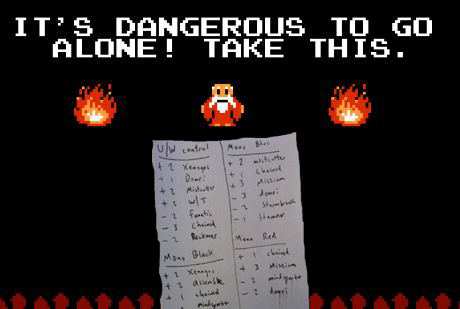
Crunch the numbers, put it together, and build a sideboard worthy of the largest Constructed Grand Prix of all time!
I unfortunately will not be attending Grand Prix Richmond, but I will be following SCGLive and am very interested to see what comes out on top. I also have an entire legion of friends going, and I really would like to see one of my boys take down the title.
What about you? What will you be bringing to battle?


